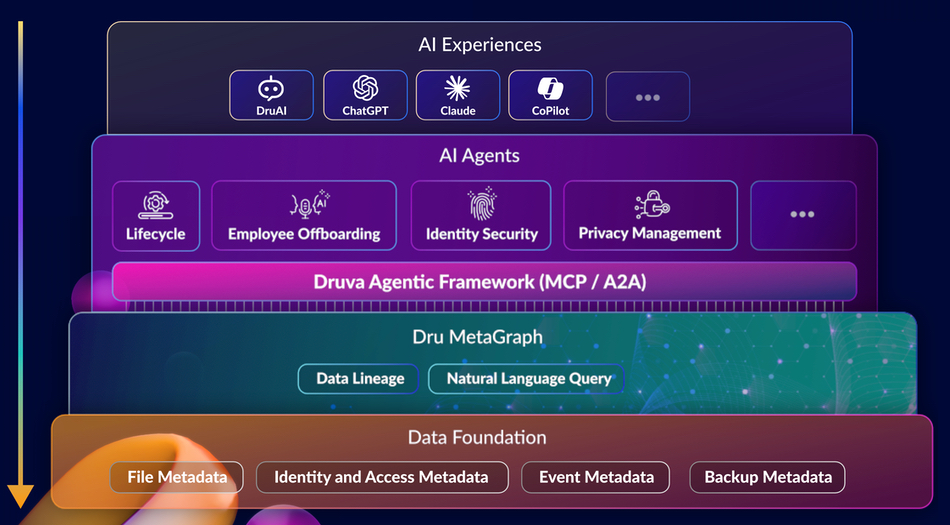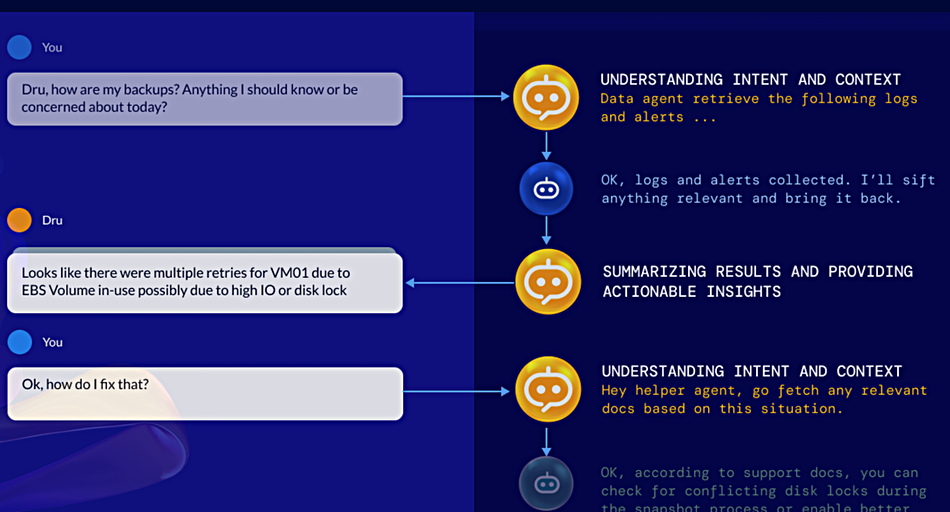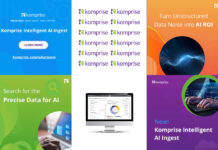SaaS data protector Druva is providing new AI agents that can query aggregated backup data in real time to get summaries of risks, anomalies, and trends, and speed and simplify backup data management.
It says that historically, “backup intelligence has been limited to static dashboards and siloed reports.” In many environments today, it says, teams must extract, transform, and load backup metadata into separate systems before it can be analyzed, which takes time and adds cost. These limitations can be swept away by using graph theory to map backup metadata and letting natural language-driven AI agents search it.

Jaspreet Singh, CEO and co-founder of Druva, states: “Backup has always been an untapped goldmine of intelligence, and Druva has steadily unlocked that potential with our growing family of AI agents. With Dru MetaGraph and the new DruAI agents, we’re taking the next step and giving every team the ability to query and act on their metadata. This democratizes access to backup intelligence, extending its value beyond IT and security to functions like compliance and legal.”
Druva already has a set of data, help, and action AI agents to enable customers to restore entire applications with one command, orchestrate full workload recovery, and eliminate the need to manually piece together infrastructure components. Now it has gone further by graph-mapping its metadata and having a couple of new agents access this graph structure to provide real-time backup management intelligence and actions.
The Dru MetaGraph metadata foundation aggregates all backup metadata – such as file attributes, permissions, and identity information – into a secure metadata layer combined with graph intelligence. It is not vectoring its metadata, realizing that vectors can’t capture the relationship between events and items in the backup metadata. In graph theory, entities (nodes) and their relationships (edges) are represented in a graph data structure. This can be analyzed with algorithms investigating the relationships and interconnections to uncover patterns, predict outcomes, and optimize processes.

The two new DruAI agents use such algorithms to look into MetaGraph and analyze metadata relationships and context in real time. This can “help organizations pinpoint risks, streamline compliance reporting, and improve operational efficiency – all without moving or exposing data.”
Dru Insights Agent, with its real-time intelligence, distills complex metadata into clear, prioritized insights – summaries of the most important risks, anomalies, and trends, plus recommended steps to deal with them.
The Dru Lifecycle Agent enables admins to ask natural language queries to identify stale or non-compliant data, surface orphaned accounts before they become risk vectors, and enforce retention policies at scale. Customers can ask questions like “Show me data that is not compliant to PCI [Payment Card Industry] retention adherence.” The Lifecycle Agent translates these questions into queries against the MetaGraph and returns contextual answers, helping teams find things that need action and enable the action to take place.

DruAI can present the option for users to view results as a chart that can be pinned to their dashboard for future use.
Druva says admin teams can pull full audit trails, logs, and anomalies on demand to pinpoint threats, confirm impact, and trigger the right response instantly. They can detect unusual patterns, policy violations, or suspicious activity in real time then take immediate action to contain them. Teams can also view backup trends, check license usage, verify policy coverage in seconds, and make changes on the spot.
Dru MetaGraph and all DruAI agents run entirely within the Druva platform, analyzing metadata only, not the actual customer data. Each customer has their own isolated MetaGraph in their tenant with end-to-end encryption and compliance with global standards like FedRAMP, SOC 2, and GDPR. Customer data never leaves its boundary. Druva uses private retrieval-augmented generation (RAG) and isolated large language models (LLMs) to deliver accurate, context-aware answers without exposing information or sharing data across tenants.
The Insights Agent is generally available today. The Lifecycle Agent will be available soon. Look further into Dru MetaGraph here.








